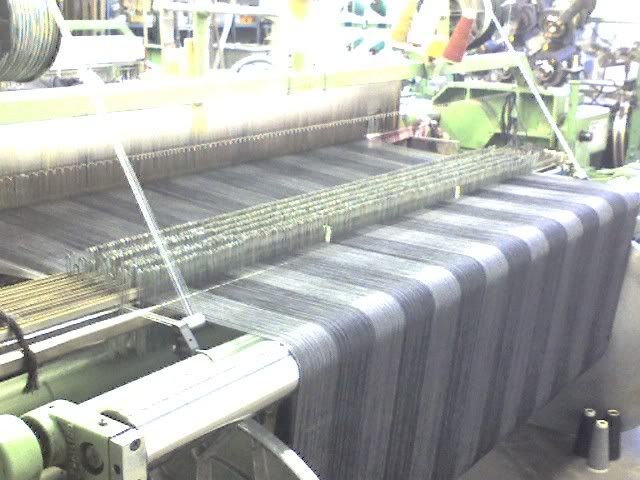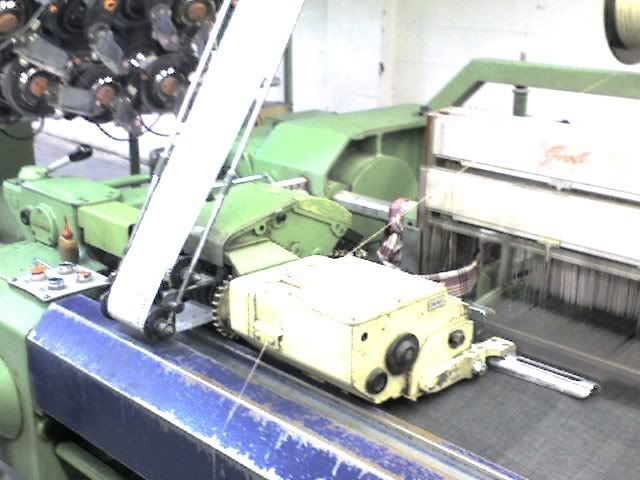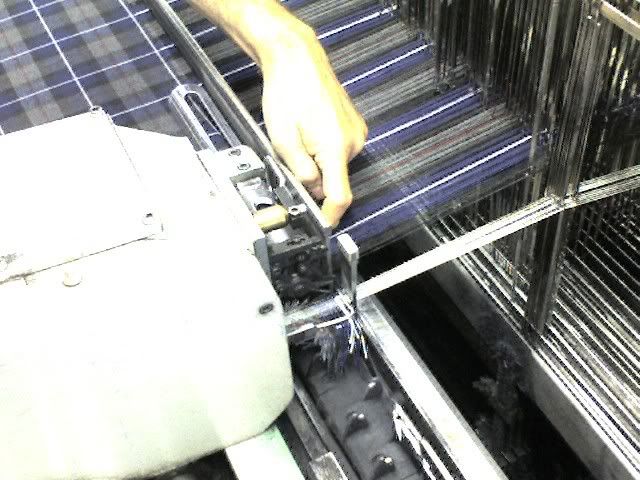|
-
what am I seeing here?
I rented a kilt for my daughter's wedding and I noticed that all along the bottom edge...even through the pleats...it looks as if the selvage edge had been turned and basted to create a hem and then when it was released the folded edge had somehow been damaged. There seems to be a line of frayed or broken fabric or yarn.
Is this natural? Normal?
.jpg)
.jpg)
DWFII--Traditionalist and Auld Crabbit
In the Highlands of Central Oregon
-
-
My best guesses:
1. It was indeed hemmed and left that way for enough time for the new edge to get some wear that appears as the roughed up line after the hem was released---kind of a hem wear scar, if you would
2. Maybe is is simply a bad turned in selvedge instead of a proper kilting selvedge---one of my kilts has a turned in selvedge which is visible as a similar line in limilar location but less so than your example
-
-
I've seen it before on non-premium weaving. I think it is a artifact of the machinery used to weave it.
-
-
It's pretty normal, if you ask me. I have a kilt in 13oz Lochcarron worsted that has the same type of selvage. You shouldn't worry about it too much... it's not exactly an eyesore, arter all.
-
-
Don't worry about it. That selvagee looks just like what I hav on my Marton Mills wool. It has nothing to do with it being "non-premium." My MM wool is great.
BB
-
-
What you are seeing is perfectly normal. It is what is called a "Turned Selvedge". There are basically two ways to finish the raw edges of fabric to create what we call a "Kilt Selvedge" or an edge of fabric that does not require a hem to keep from fraying.
A little background first. Now, understand, I'm not going to try to teach weaving or use all technical terms. I'm just going to try to give you an idea of what your seeing on your fabric.
When fabric is woven the "Warp" yarns are put on the loom, basically long strands are wound on a spool in the front, threaded through a series of heddles that can lift each yarn independently and then onto a take up spool at the back. By winding the spools with yarns of a particular color in a particular sequence you create 1/2 of the Tartan pattern.
(Here are the Warp yarns threaded onto the loom. The little wire things near the center are the heddles )

Then a shuttle loaded with some colored "Weft" yarn is passed back and forth from side to side. As the shuttle makes a pass the heddles lift or drop the warp yarns and the shuttle passes under two Weft yarn and over one. Then as the shuttle reaches the other side the heddles move again and the shuttle goes back to the other side.
In hand weaving the shuttle is actually a bobbin with a Weft yarn wound on it. As it passes from side to side, one long continuous yarn makes the trip from one edge over to the other and back again. If a color change is needed to create the Tartan pattern a shuttle with a different colored Weft yarn is loaded, the ends of the two yarns are knotted together and the shuttle continues it's side to side trips.
Progress now to automated machine weaving. They had to find a way to eliminate the hand tying of one color yarn to another and a way for a machine to quickly pass the shuttle back and forth.
(Here is the shuttle picking up a Warp thread from one of the spools at the left and getting ready to pass it to the other side.)

The method some machines accomplish this is for the shuttle to only take the end of one Weft thread from a large spool on one side of the the loom, pass it over and under the Warp yarns over to the other side, and then back for a short distance only before letting go of it and going back to the first side to pick up another yarn of a different color.
It was found that this short pass backwards locked the Weft yarn enough to keep the selvedge from unraveling but did leave the small ends of the threads exposed just above the edge.
This is what you are seeing. It's all the short ends of each Weft yarn.
(And here is the small turned-back end of the Warp yarn before it is cut and the shuttle returns back for another yarn)

This type of selvedge used to be thought of as a little less quality than one where the Weft was one long yarn that went all the way from one side and back to the other side without end.
Today, this type of weaving is becoming the industry standard. Even the very high quality weaving mills are using this type of selvedge. Lochcarron now uses it as does much of D.C. Daglish and Strathmore.
So don't worry, it is normal.
Last edited by The Wizard of BC; 1st May 08 at 10:03 PM.
Steve Ashton
www.freedomkilts.com
Skype (webcam enabled) thewizardofbc
I wear the kilt because: Swish + Swagger = Swoon.
-
-
Wow, great pictures, Steve!
-
-
Oh... I didn't even think about there being pictures. I was too mezmorized by the explaination. Wow...
Last edited by Bugbear; 1st May 08 at 11:12 PM.
I tried to ask my inner curmudgeon before posting, but he sprayed me with the garden hose…
Yes, I have squirrels in my brain…
-
-
BTW, the photos were taken at Fraser & Kirkbright when I was there talking to Gordon about weaving the X Marks Tartan.
Here is Gordon in his world.

Steve Ashton
www.freedomkilts.com
Skype (webcam enabled) thewizardofbc
I wear the kilt because: Swish + Swagger = Swoon.
-
-
Last edited by cacunn; 14th May 08 at 07:38 PM.
-
 Posting Permissions
Posting Permissions
- You may not post new threads
- You may not post replies
- You may not post attachments
- You may not edit your posts
-
Forum Rules
|
|
.jpg)







.jpg)















Bookmarks